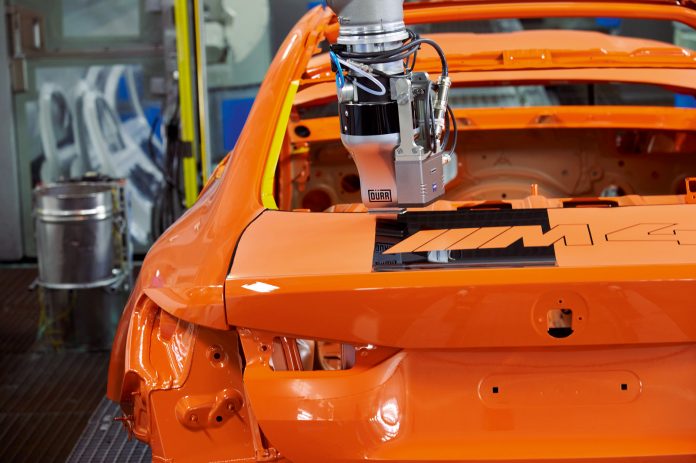In the past year, new precision painting processes have emerged that promise to speed up the production of cars, make them more sustainable and offer manufacturers a wider range of color options and decors.
Earlier this year, Under the Skin looked at ABB’s new robotized pixel paint, a technology that applies paint like an inkjet printer and creates sharp edges on the paint rather than the soft blurring of traditional spray guns. It also means there is no overspray and the company claims 100% of the paint is applied to the car. In contrast, around 20% of conventionally applied paint ends up in the spray booth filters. The German company Dürr has tested a similar technology called Ecopaintjet from BMW and the process is already in use at Audi.
Traditionally, painting a car has been one of the dirtiest and most wasteful aspects of the production process. In the past, paint from high-pressure spray guns ricocheted off the surface of the car body, creating a mist of paint droplets that fans extracted from the spray booth and filtered. Then came HVLP (high volume, low pressure) guns, which made a huge improvement. But even with two-tone processes (e.g. different colored roof tiles) the first color has to be applied and dried, covered with adhesive tape and paper to protect against overspray, and then the second color has to be applied.
The new robot systems are completely different. The Pixelpaint spray head is equipped with 1000 nozzles that fire tiny droplets of paint, the smallest of which is about the size of two human blood cells, and give the paint razor-sharp edges when applied. The situation is similar with the Ecopaintjet robot, which applies paint through a nozzle plate perforated with 50 tiny holes from a distance of 30 mm. Before each paint job, a measuring system moves paint-free over the shell and determines the exact shape so that the robot can move evenly over the surface. On the basis of this data, the software calculates the distances that the applicator has to cover when driving over the body, and at the same time controls the speed and the angle of inclination of the spray head.
Once that’s done, the robot can start painting, covering about 1.8 square feet per minute and taking about two minutes to complete a typical car roof panel. For the traditional removal of the body from the painting line, Dürr estimates that masking and applying the second color would take several people 50 minutes. In addition, the new process saves around 15 square meters of masking tape and film per shell. In addition, the new technology is expected to save up to 25% in energy consumption when drying the paint.
BMW is testing the same technology on an in-house fleet of 19 M4 Coupés, which apply two-tone paintwork and M4 logos to the trunk and bonnet. BMW estimates that reducing the energy-filtering overspray from the air in spray booths when the system is introduced could result in energy savings of 6000 MWh over 7000 operating hours and a reduction in the carbon footprint of its manufacturing processes by 2000 tons of CO2 per year.

